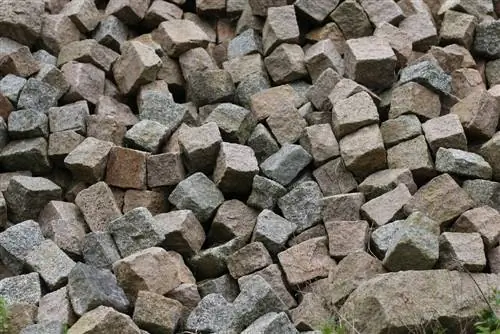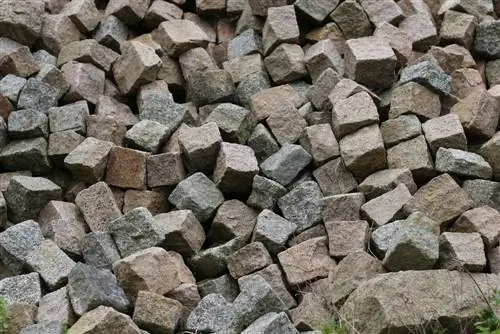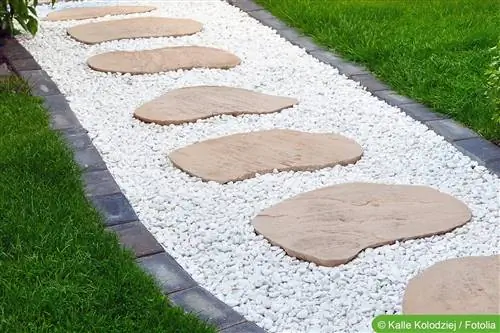- Author admin [email protected].
- Public 2023-12-17 03:39.
- Last modified 2025-06-01 06:48.
You often lay your garden path out of paving stones yourself, but laying the stones alone is not enough for a professional garden path; you also have to grout the paving stones. Filling the joints in garden paths is also possible on your own and, with the right preparation, it's not difficult at all.
What material do you use to grout paving stones?
Grouting ensures that the stones have a secure hold in the garden path and also look beautiful. Anyone who sees a garden path made of stones where the joints have not been filled will wonder why this path is only half finished.
It just doesn't look good if the joints between the stones are left. That's why the joints are filled with different materials.
Basically, four materials can be used to fill joints in garden paths. These are sand, quartz sand, joint mortar and rock dust. They all have their advantages and disadvantages and the decision for a material should be based on what you want to achieve with the joints.
The advantages and disadvantages of sand
Sand doesn't cost much and is easy to process. The latter point indicates that even inexperienced people should be able to grout paving stones with sand. The sand also seeps into the joints and leaves a habitat open for plants and insects.
If there is less pressure on the pavement and there is a need for good infiltration ability, sand is the best choice. For example, large areas of cobblestone are usually grouted with sand. Lime and crushed sand is suitable for filling the joints in garden paths.
What are the advantages of quartz sand?
Quartz sand costs more to purchase than normal sand. It is very popular for narrow joints and is mainly used for its optical effect. The white color makes the quartz sand something very special.
However, the other required requirements are its weak points: it has only poor support properties, gets dirty quickly and is ideal for the growth of weeds in the joints.
When do you use rock dust?
Rock flour, also called bas alt flour, creates a dark joint appearance, which looks very nice. The rock dust is either slurried in or swept away. Moistening, as is necessary with sand or quartz sand, should be avoided with rock powder, otherwise it will clump. In terms of properties, the rock dust is reminiscent of quartz sand, but it has a better supporting effect.
Joint mortar - the ideal joint compound?
Resin-based grout is a mixture of quartz sand and plastic components. Accordingly, it has a number of advantages, while there are almost no disadvantages.
The grout becomes hard, lasts a long time, nothing can grow in the joints and you hardly have to clean them. If the pavement is dirty, you can safely use a high-pressure cleaner.
In addition, the mortar in the joints is elastic but frost-resistant. Grouting paving stones with grout does not require any special knowledge. It can be done by anyone.
How to grout the paving stones?
The most important tool when grouting is a broom. This is used to insert the material used into the joints. Sand and quartz sand are wet before grouting. We're talking about mudding when it comes to filling joints in garden paths.
The damp material is applied to the plaster and carefully swept into the joints with a broom. Sometimes it is necessary to re-grout after the sand has settled.
Rock powder is added to the joints, as is sand and quartz sand. When using grout, you should follow the instructions for use. There are different products on the market that are processed differently.






